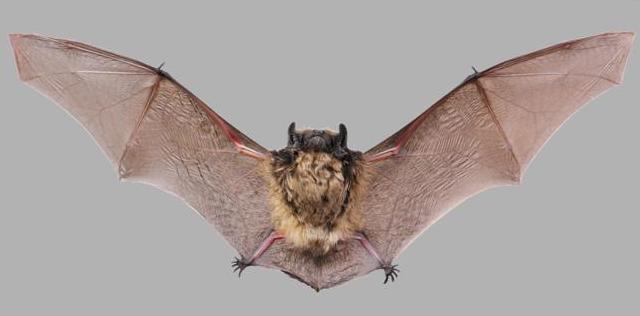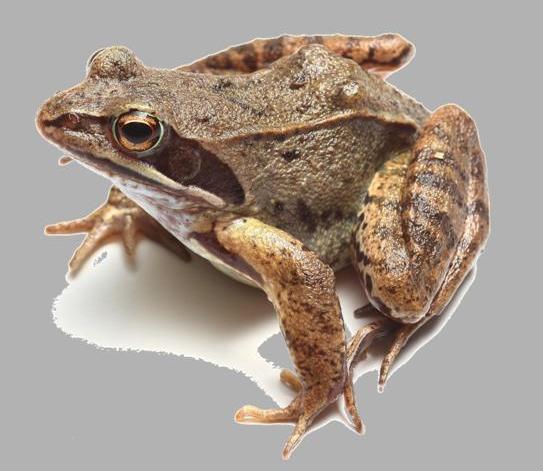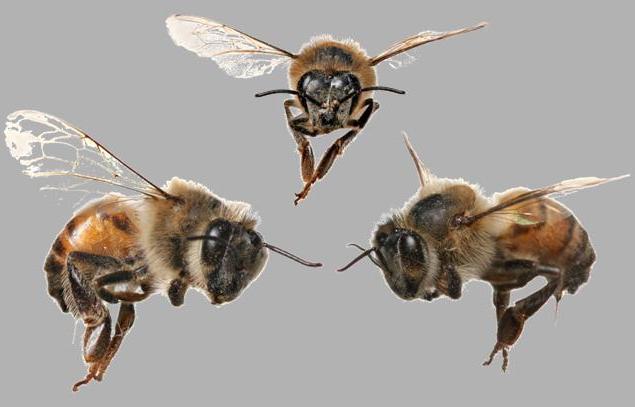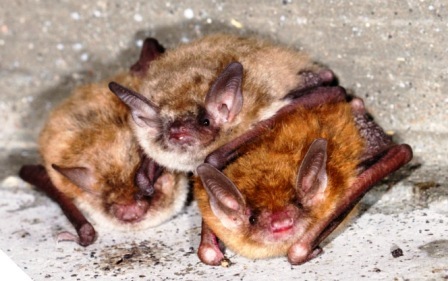A large number of small creatures has been dying mysteriously--and ominously

The rapid disappearance of amphibians worldwide, and of honeybees and cave-dwelling bats in North America, comes at a perilous time for Mother Earth. Climate change, drought, and the spread of infectious diseases make survival tougher for all species, and are contributing factors in these creatures’ demise. But the scary thing about these seemingly unrelated disappearances is how little is understood about them. In each case, a pathogen has been blamed, but its role or how it kills remains mysterious.
The potential impact, however, is clear. Despite their small size and ick/ouch factor, honeybees, bats, and amphibians are all crucial to our well-being. Bats make up 25 percent of all mammal species and eat massive quantities of insects each night. Honeybees pollinate a quarter or more of the American diet. And amphibians, because of their permeable skin, are truly “canaries in the coalmine”—harbingers of what lies ahead for creatures with skin that is only slightly less permeable.
Failing to do anything about the loss of millions upon millions of these small, overlooked creatures will eventually doom everything further up the food chain.

Where did all the toads go?
Starting in the 1970s, biologists started noticing with some embarrassment that they could not locate many of the amphibians mentioned in earlier studies. It took another decade for these individual cases to emerge as a worldwide trend. Starting in the Central American rainforests, amphibians were disappearing at a much higher rate than could be explained by the modern march to extinction.
The vanishing trend has now spread to every continent, putting hundreds of species in immediate peril. About 122 species have gone extinct since 1980, and half of the world’s amphibian species could disappear in our lifetimes.
A culprit was found in 1999, a type of chytrid fungus. It made for a strange villain, however, as these microbes have existed in ponds and lakes for ages, doing limited harm. Suddenly, frogs, toads, salamanders, and newts infected by the fungus were dropping dead of heart failure due to an ionic imbalance caused by diseased skin. Death came so fast, in some cases, that frogs would be found sitting lifelike until tipped over.
The fungus is devastating when it first hits, says Mason Ryan, a graduate student at the University of New Mexico who has been studying amphibian extinction for 14 years. In less than two months, half of amphibian communities can disappear, and the total population may drop by 80 percent.
Moreover, this deadly, virulent form of chytrid fungus, known as Bd for short, is capable of infecting every species of amphibian—6,000 or more worldwide. “It doesn’t kill them all, but every one can die from it,” says Ryan. Why some species and communities are more vulnerable than others probably has to do with climate change and shrinking habitat, Ryan says, but how these factors work together is unknown.
What is known, or suspected, is that the deadly Bd fungus emerged through human trade in amphibians. Specifically, the African Clawed Frog and the North American Bullfrog have been traded internationally for decades—the former used for pregnancy testing and lab research, the latter for meat. Both species carry Bd but are not seriously affected by it.
In New Mexico the disease struck first in the north, and quickly spread south to infect all 30-some species in the state. Our Chiricahua Leopard Frogs and Boreal Toads have been nearly wiped out, says Jennifer Stabile, amphibian conservation biologist for the Albuquerque Biopark.
Already suffering from drought and wildfires that fill rivers with ash and soot, New Mexico amphibians are now in serious trouble. The BioPark just unveiled an amphibian-themed mosaic created by 7,000 schoolchildren as part of an effort to involve the next generation in their imperiled status.
By the time those kids grow up, though, it may be too late. A worldwide coalition of zoos and conservation groups has launched a project called Amphibian Ark, to save select amphibian species in captivity. How or whether those animals could eventually repopulate their habitats—which are also disappearing—is highly uncertain. But there doesn’t seem to be another immediate solution.
“A lot of people look at frogs and see this slimy thing, but amphibians are so important to humans,” says Stabile. “They are an indicator species because of their permeable skin—what affects them will affect us all eventually. Also, imagine the insect population we would have globally and locally without amphibians.”
Stabile, who began her research with the legendary singing coqui frogs of Puerto Rico, testifies to the passion that can develop from looking closely at small endangered creatures. “Amphibians are so gorgeous, to hear them after a monsoon—you would miss a large part of what makes the world beautiful,” she says sadly. “I would not like to live in a world without frog sounds.”
“It’s a grim outlook,” she says of the world’s frogs and toads. “Even here in Albuquerque, every species has a niche and is important to the whole. We don’t have the quantity of amphibians as in other states, but they need people fighting for them.”
How to help amphibians:
- Don’t use pesticides; whatever kills bugs will harm frogs and toads.
- Create habitat, especially with water and hiding spots.
- Do not support trade in amphibians.
- Join or donate to Amphibian Ark: www.amphibianark.org

Runaway flight
North American beekeepers first sounded the alarm in 2006, when they checked their hives at the end of winter. Instead of being full of bees ready to head out and pollinate, the colonies were nearly empty, with 75 percent to 90 percent of the bees missing. The hives were still full of honey, with no dead bodies to signal the usual causes of death. Sometime in winter, the bees had simply left and not returned.
Losses were highest for commercial beekeepers, who hire out their bees to pollinate crops from California to Maine. The problem grew even worse this year, with many beekeepers losing half their hives, compared with a third in previous years. Until the advent of colony collapse disorder, as the phenomenon is known, bee declines were around 15 to 20 percent per year.
The reasons are still a matter of dispute. The European Union is targeting a class of systemic pesticides known as neonicotinides. In the U.S., a comprehensive federal study just concluded in May that no single factor could be blamed, and that the collapse results from a combination of factors.
Many researchers suspect that exposure to pesticides makes bees more susceptible to diseases spread by the Varroa mite and Nosema apis parasite. Other stressors, such as the shrinking diversity of bee diet and the practice of transporting them across the country, probably contribute to the slow decline in bee population that began in the 1970s.
New Mexico beekeepers have been less affected than some because so few of them travel commercially. But beekeepers here say they also are seeing losses mount each year, whether from pesticide use, genetically modified crops, or years of drought.
“Beekeeping is a lot more difficult now than in the past,” says TJ Carr, who has been keeping bees in Albuquerque for 20 years. “Les Crowder, the premier beekeeper in this state, says 40 years ago it was simple to keep bees. Now he no longer takes his bees anywhere, because even organic farmers use (the herbicide) Roundup on orchard grass.” Home beekeepers are vulnerable to any pesticides used within the 3-mile radius visited by their bees.
Carr says he used to harvest 500 pounds of honey from the four hives on his roof. Last year, because of the drought, he got 37 pounds. This year he predicts nothing will be left beyond the needs of the hives themselves. “No rain, no blossoms, no honey,” he says.
Santa Fe beekeeper Loretta McGrath has not harvested honey in two years. “It’s a complex issue,” she says of the multiple factors blamed for growing bee losses. “And it’s not a beekeeping issue—it’s much broader than that.”
McGrath is among a group of beekeepers who created the Pollinator Partners Project three years ago to address the alarming decline in pollinators, from native bumblebees to hummingbirds, bats, and insects. A program of Farm to Table New Mexico, the Pollinator Partners hope to alert the public to the vital importance of pollinators to any creature that eats.
“If these plants can’t flourish, and they’re not producing seed, we’re losing biodiversity—and that’s a really significant issue,” McGrath added. “It’s not just a human issue. It’s the health of major ecosystems.”
How to help honeybees and other pollinators:
- Don’t use pesticides.
- Provide habitat by growing healthy gardens.
- Build demand for pesticide-free produce.
- Learn about pollinators at www.farmtotablenm.org/programs/pollinator-partners/
and www.pollinator.org

Dens of death
The most devastating disease ever to hit North American wildlife has already killed millions of cave-dwelling bats since 2006. First discovered in upstate New York, white-nose syndrome is a fungal infection that attacks insect-eating bats as they hibernate. Bat researchers stumbled upon it when they went into the large caves (hibernacula) where they conduct annual counts, and found thousands of dead bodies.
It took two years to identify the strange white dust on the animals as a new pathogen, G. destructans. The fungus attacks the face and wings, “digesting” the skin. And since bats are mostly wing, this seems to rouse them out of hibernation. They awaken weak, hungry, and very thirsty, because the wings regulate water balance. Once bats leave the cave, however, they are doomed. They have no fat reserves and no insects to feed on.
In just a few years, caves that once held tens of thousands of bats each winter have shrunk to a few dozen. The disease has spread to 21 states and four Canadian provinces in the East and Midwest, affecting seven species of insect-eating bats. White-nose is highly deadly, killing more than 70 percent of bats. All 25 hibernating bat species in the U.S. are potentially vulnerable.
Biologists hope the fungus, which thrives in the cold and damp, will not easily jump to drier Western caves. But much about the disease is unknown, just as little is known about bats themselves.
“Bat research is not really funded, as a nongame species,” says Justin Stevenson, who operates RD Wildlife Management with his wife, Holly Smith. “People don’t even know where bats stay.” Stevenson and Smith consult on wildlife-related problems, and about 90 percent of their cases involve bats. As a result, the two wildlife biologists have learned all they can about the little mammals, becoming quite fond of them in the process.
“We love all wildlife, but bats are fascinating from a biological perspective because so much is unknown, and they are so imperiled,” says Stevenson. “I hate to anthropomorphize, but most of them could be called cute and charismatic.”
Bats’ crucial importance to humanity is obscured by their evil image, he notes. Many people still believe that bats are blind, transmit rabies, crash into people, and fly with the witches at Halloween. In fact, bats’ value to agriculture runs to the billions of dollars a year in pest control and pollination.
Few people are aware of that because bats feed and fly at night. But they make up a quarter of all mammal species and play an essential role in insect control worldwide, having evolved to inhabit different strata of the environment. “Bats are doing at night what birds do during the day,” says Stevenson. Each tiny bat consumes thousands of insects a night.
New Mexico has 28 bat species, including the Mexican Freetail (the ones at Carlsbad Caverns). Since 2011, when a case of white-nose syndrome was suspected in neighboring Oklahoma (but never confirmed), the New Mexico Bureau of Land Management has closed dozens of caves to prevent further contamination. While bats can transmit the fungus to each other, it is humans who are believed responsible for introducing the disease from the caves of Europe, where the same fungus has existed without killing off bats. No remedies have been found except treating individual bats with antifungal remedies.
Meanwhile, Stevenson and Smith launched a nonprofit group last year to raise money for bat research, called FightWNS. All the money they raise through donations and sales of T-shirts and stickers goes directly to research on white-nose syndrome.
“What it comes down to is there’s not much funding,” Stevenson explained. “We’re trying to raise awareness and raise money both, because funding is so critical with diseases that don’t affect humans.”
How to help bats:
- Don’t use pesticides, which are highly toxic to bats.
- Provide standing water and insect-attracting plants in your garden.
- Put a bat house in your yard, with help from the Rio Grande Basin Bat Project:
batbunkhouse@comcast.net or (505) 238-3964. - Buy a cool bat T-shirt or donate at fightwns.org
